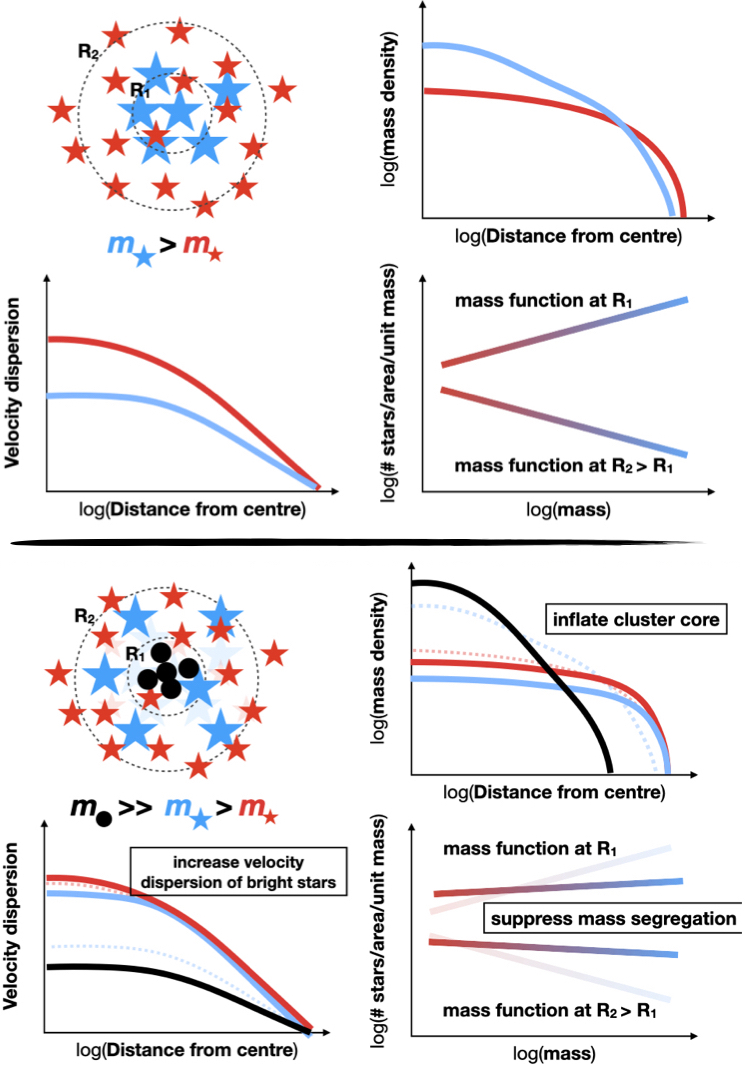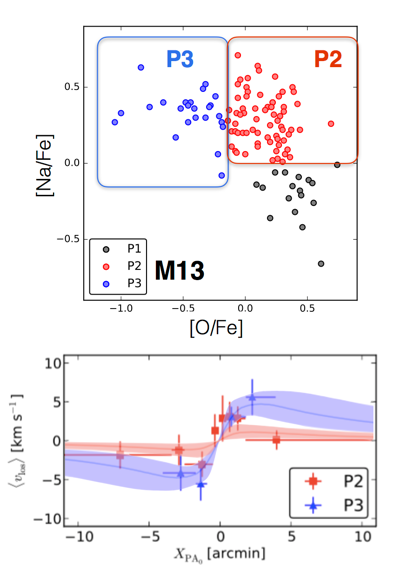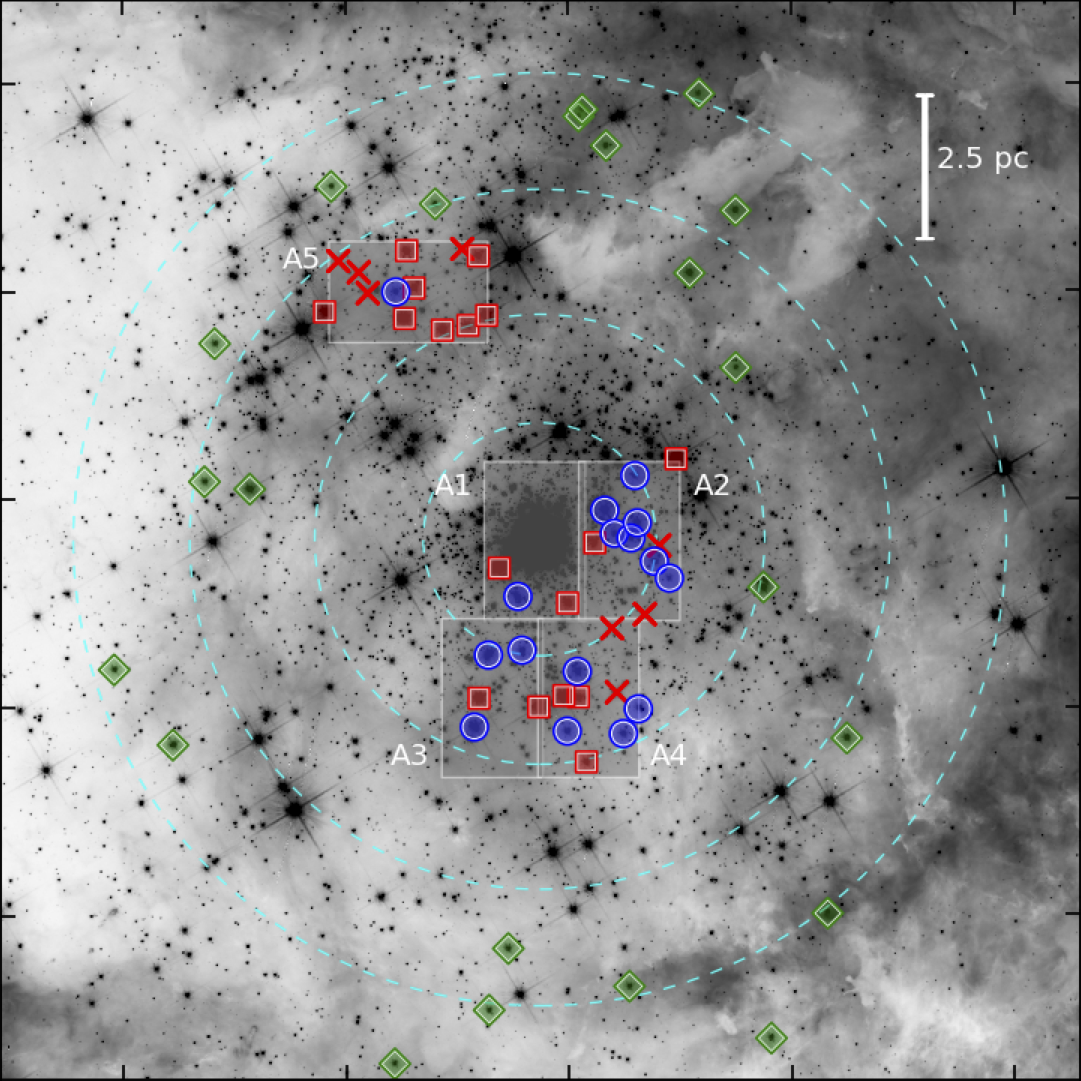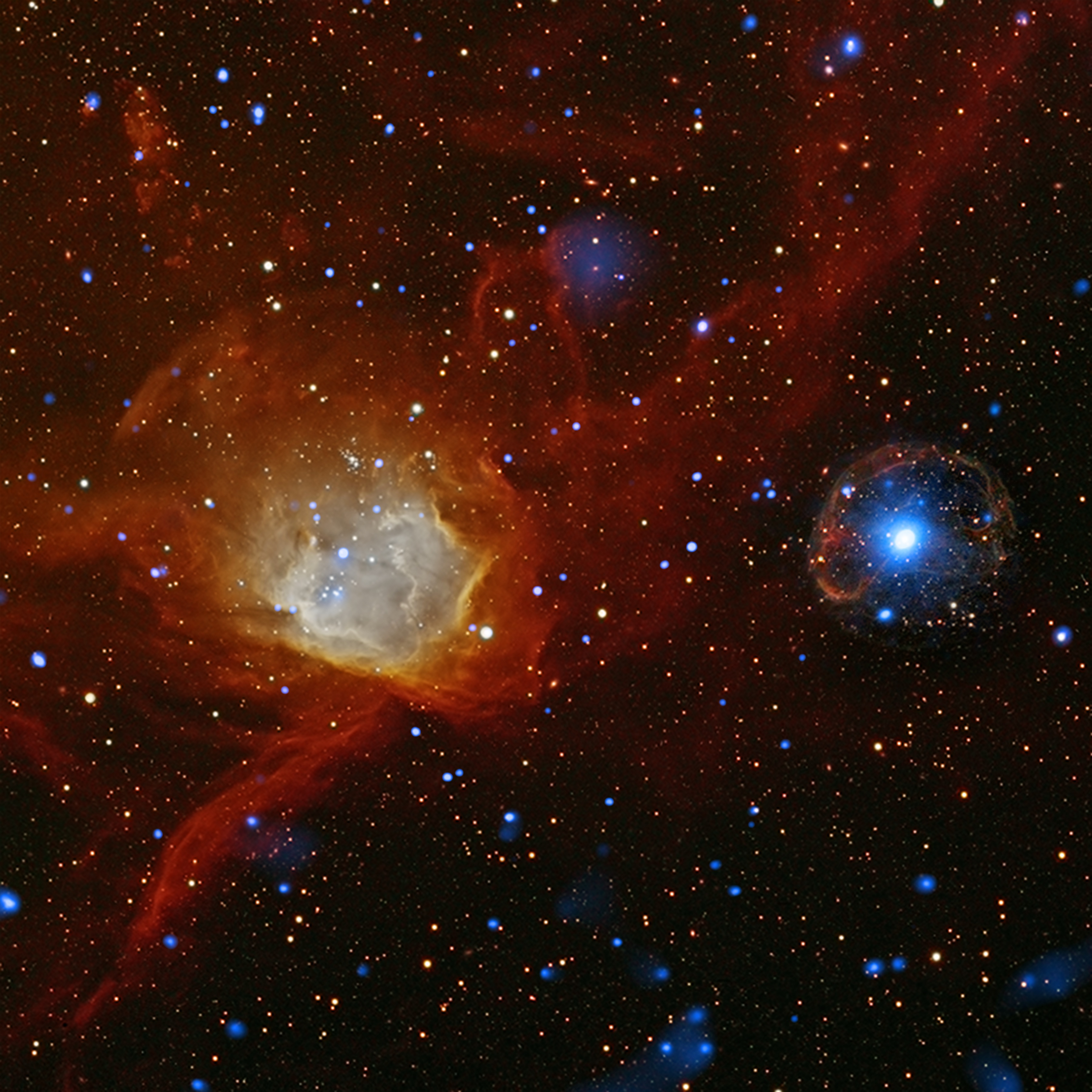Dynamical modelling of globular clusters
Some of my recent work has focused on using and testing distribution function based
multimass dynamical models and applying them to real data. These models capture the trend towards equipartition of different
mass species and the resulting mass segregation in systems
that are dynamically evolved due to two-body relaxation. They
are very useful to infer the mass distribution within
clusters, their global (initial) stellar mass function, their content of dark stellar
remnants, including stellar-mass black holes, and also to address claims for the presence of
intermediate-mass black holes in the centre of globular
clusters (e.g. Gieles et al. 2018, Zocchi et al. 2017, Zocchi et al. 2020, Hénault-Brunet et al. 2019, Hénault-Brunet et al. 2020, Dickson et al. 2023a, Dickson et al. 2023b).
I am also interested in how data from upcoming and future instruments/facilities can further shed light on the dark side of globular clusters and their interaction with the Milky Way. I recently led the Near-Field Cosmology Science Working Group for the Phase 0 study of the proposed Canadian-led CASTOR mission.




